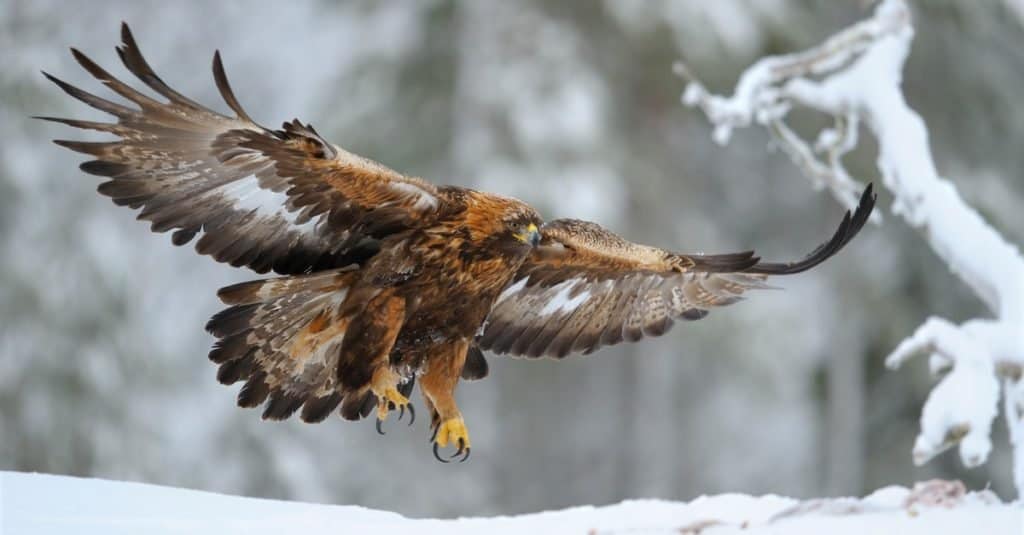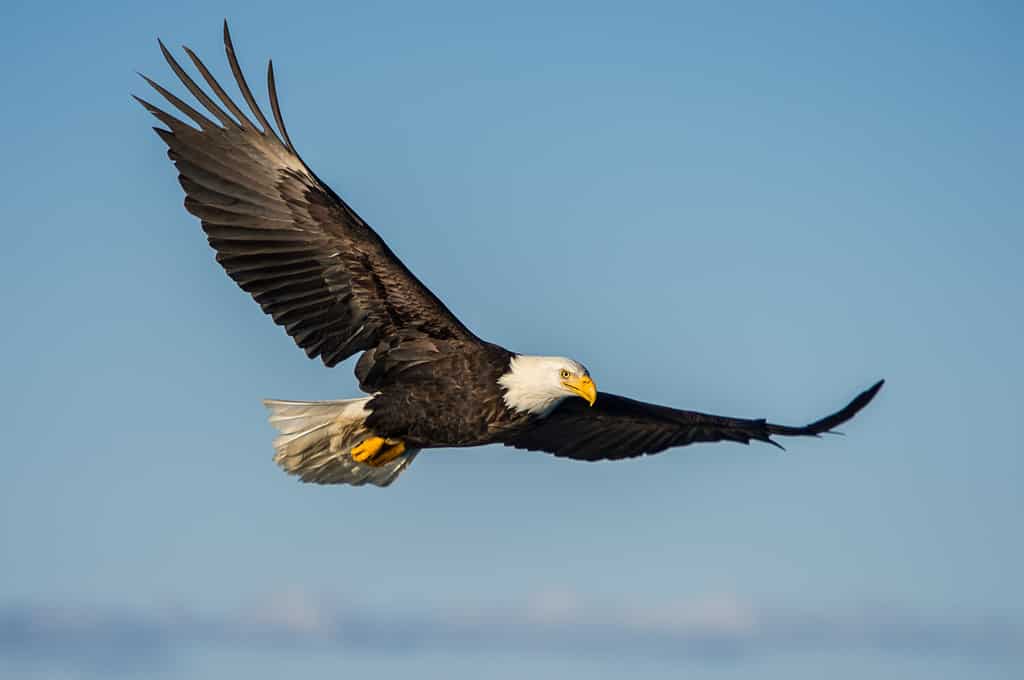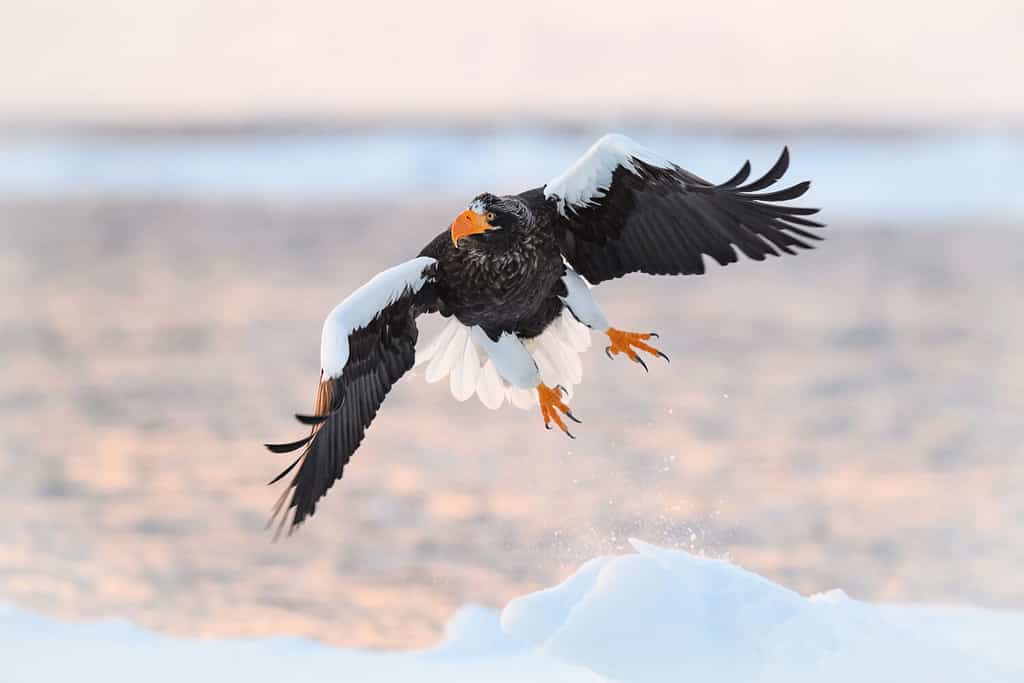Canada is home to two large native eagle species. In addition, a third, even larger vagrant species has been flying through Canada recently. Read on to find out which three big eagles you may see in Canadian skies and how they rank in size.
#3 Golden Eagle (Aquila chrysaetos)

The golden eagle is the national bird of Mexico, but it also ranges well into northern Canada.
©Vladimir Kogan Michael/Shutterstock.com
Length: 27.6-33.1 in (70-84 cm)
Weight: 6.6-13.5 lbs. (3.0-6.125 kg)
Wingspan: 6.1-7.2 ft. (1.85-2.20 m)
The smaller of Canada’s two native eagle species is the golden eagle. The majority of Canada’s golden eagles breed across the western half of the country, with smaller breeding populations also found around the Hudson Bay and the Gulf of Saint Lawrence further east. During spring and autumn migration seasons, golden eagles can also be seen across the eastern half of the country, while the southernmost portions of the western provinces host overwintering and year-round populations.
#2 Bald Eagle (Haliaeetus leucocephalus)

While most famous as the official national bird of the United States, bald eagles are also found throughout much of Canada.
©FloridaStock/Shutterstock.com
Length: 27.9-37.8 in (71-96 cm)
Weight: 6.6-13.9 lbs. (3.0-6.3 kg)
Wingspan: 5.5-8.0 ft. (1.68-2.44 m)
The larger of Canada’s two native eagle species is the bald eagle. Bald eagles breed across the lower two-thirds of Canada, with a range extending from northern Yukon and southern British Columbia in the west to Labrador, Newfoundland, and Nova Scotia in the east, with the largest populations in coastal British Columbia and southern Quebec. During the winter, they can be found in portions of southern Canada and up the Pacific Northwest coast.
#1 Steller’s Sea-Eagle (Haliaeetus pelagicus)

Steller’s sea-eagle is not a native North American species, but one intrepid traveler has been crisscrossing the continent since at least 2020 and is currently hanging out in Canada.
©Petr Simon/Shutterstock.com
Length: 33.5-41.3 in (85-105 cm)
Weight: 10.8-19.8 lbs. (4.9-9.0 kg)
Wingspan: 6.4-8.0 ft. (1.95-2.45 m)
Steller’s sea-eagle is a bigger cousin of the bald eagle and the largest member of the sea-eagle genus. This species is not native to Canada but rather to Northeast Asia. However, since first appearing in Alaska in 2020, a lone vagrant has been tracked across North America, wandering through both Canada and the United States, venturing as far south as Texas and as far east as Nova Scotia! Nicknamed Stella, this wayward bird has become an avian celebrity, complete with a dedicated social media account where fans can share and track sightings. As of September 2023, Stella is currently in Ontario, Canada.
Summary of The Top 3 Largest Eagles Found in Canada
| Common Name | Scientific Name | Native or Non-Native |
|---|---|---|
| #3 Golden Eagle | Aquila chrysaetos | native species across Canada |
| #2 Bald Eagle | Haliaeetus leucocephalus | native species across Canada |
| #1 Steller’s Sea-Eagle | Haliaeetus pelagicus | species not native to Canada; single vagrant present |
The photo featured at the top of this post is © FloridaStock/Shutterstock.com
Thank you for reading! Have some feedback for us? Contact the AZ Animals editorial team.







